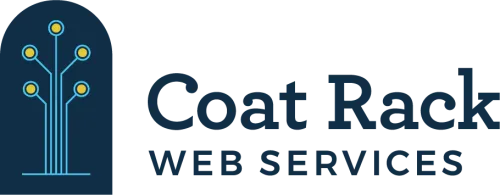August 6, 2025
We know that large gifts can transform your nonprofit's future, but securing them requires more than a lucky meeting. Major donors account for just 10% of your donor base, yet they often contribute 90% of total fundraising revenue. That means your approach to cultivating these relationships must be intentional, focused, and strategic.
This guide will help you master major donor cultivation and build strong connections that lead to major gift opportunities. Whether you're starting a donor cultivation plan or refining your approach, you'll find clear steps to engage potential donors and support long-term fundraising success.
Essential Major Donor Cultivation Strategies That Build Strong Relationships
Effective donor cultivation is not just about asking—it's about inviting someone to get involved with your nonprofit in a way that feels personal and meaningful. You're not only looking for a large donation—you're working to build relationships that lead to long-term impact. Let's explore four essential strategies that make this possible:
1. Personalize the Experience
Use the donor's name, reference their giving history, and align your outreach with their interests.
2. Invite Strategic Engagement
Think beyond events. Offer board briefings, site visits, or one-on-one meetings with program staff.
3. Recognize Thoughtfully
Make appreciation personal. A handwritten note or a mention in a newsletter can go a long way.
4. Communicate with Purpose
Keep your updates consistent and meaningful. Don't only reach out when it's time to ask.
Major donor cultivation is about building connections before seeking contributions. Each touchpoint should show donors that their involvement matters.
Structuring Your Major Gift Program for Maximum Success
To build a strong major gift program, your organization needs more than enthusiasm. It needs a thoughtful, well-organized donor cultivation plan. While personal touches matter, having the right structure in place ensures you don't leave major opportunities to chance.
A successful program depends on understanding where each potential donor is in the cultivation cycle, how to steward them properly, and how to track your team's outreach efforts. From identifying qualified prospects through effective prospect research to assigning staff and defining the metrics that matter, a strong internal system will make your cultivation efforts more scalable, more strategic, and far more likely to result in transformational donations.
Here's a simple framework to build one effectively:
|
Element |
Why It Matters |
|
Qualification Criteria |
Define what qualifies someone as a major donor. Set thresholds based on gift size, capacity, or giving history. |
|
Dedicated Staff |
Assign a major gift officer or team. Focused roles lead to better relationships and stronger results. |
|
Monitor engagement frequency, meeting outcomes, and gift likelihood. These fundraising cultivation metrics help you see what's working. |
|
|
Prospect Pipeline |
Use a tiered list to track prospects from interest to solicitation. Update it regularly with notes and next steps. |
When structure meets strategy, major donor cultivation becomes more intentional and drives stronger major gift outcomes as part of a long-term fundraising cultivation plan.
Fundraising Cultivation for High-Net-Worth Individuals
Fundraising cultivation for high-net-worth individuals is both intuitive and data-driven. It's one of the most important aspects of a successful donor cultivation plan, especially when aiming to secure transformational gifts.
A thoughtful fundraising cultivation process not only helps identify qualified prospects but also ensures that every interaction moves the relationship forward. To help fundraisers apply both sides effectively, here's a step-by-step approach:
Step 1: Identify and Segment
Use wealth screening and giving history to identify qualified prospects. Leverage prospect research tools to uncover who might be interested in supporting your work. Group them by interests, capacity, and engagement level.
Step 2: Research and Prepare
Learn about their background, philanthropy, history, and values. Preparation helps shape authentic conversations. This is where donor research becomes critical for getting to know each potential donor and planning how to build a genuine relationship with your nonprofit.
Step 3: Build the Relationship
Start with low-pressure touchpoints—events, introductions, or personalized updates. Let trust grow naturally over time.
Step 4: Engage with Purpose
Present opportunities aligned with their values. Be intentional with your asks, and ensure every interaction adds value.
Step 5: Track and Evaluate
Use a CRM or tracking tool to monitor meetings, responses, and next steps. Analyze what's working and refine your approach.
This step-by-step method makes fundraising cultivation more intentional, more personal, and far more effective when engaging major donors.
The Psychology of Major Donors and Their Giving Motivations
Understanding what drives major donors to give can make all the difference. Giving decisions at this level are rarely impulsive—they're often rooted in deep personal values, long-term goals, and an emotional connection to your mission. When fundraisers take time to understand these drivers, they can design more meaningful engagement experiences that align with the donor's intentions.
The Art
-
Build an emotional connection by listening closely and honoring the donor's personal journey.
-
Share stories that resonate with their values and vision.
-
Be mindful of tone, timing, and how the ask fits their current mindset.
The Science
-
Use data from past giving behavior, wealth screening, and affinity indicators.
-
Segment your donor list based on motivations and communication preferences.
-
Track patterns in recognition preferences, response times, and gift timing.
This balance between emotional intelligence and data-backed insight helps you understand not just what major donors give, but why they give, and how to steward them with intention throughout the cultivation cycle.
Enhancing Major Giving with Strategic Nonprofit Solutions
Enhancing major giving requires strategic tools and support systems that simplify the complexity of managing donor relationships. From setting up prospect pipelines to tracking meaningful engagement, having the right infrastructure matters. That's where Coat Rack comes in. We support nonprofits with the tools and guidance needed to elevate their major donor cultivation. From CRM integration to custom donor tracking and engagement automation, we help you:
-
Personalize every interaction with the right data
-
Track fundraising cultivation milestones at each stage
-
Build meaningful donor journeys that lead to large gifts
Major donors play a much deeper role than just providing funding. They are partners who help shape your mission's long-term success. Each major gift helps drive growth, expand programs, and fund high-impact initiatives that shape your nonprofit's future. A well-timed major gift can also inspire confidence among other supporters and encourage additional giving. With the right strategy and support, your organization can foster deeper connections, enhance fundraising cultivation outcomes, and increase major gift results through smarter planning and donor-focused engagement.
Ready to Grow Your Major Donor Program?
We understand how challenging it can be to engage major donors consistently and effectively. At Coat Rack, we provide nonprofits with an all-in-one donor management platform that streamlines prospect research, automates personalized outreach, and tracks every stage of your cultivation journey. Through our strategic guidance and technical expertise, your team is empowered to identify high-potential donors faster, tailor meaningful interactions, and monitor fundraising progress in real time.
Ready to transform your major gift program? Partner with Coat Rack to build a data-driven cultivation plan that turns prospects into long-term supporters and unlocks transformational gifts. Contact us today to get started!



